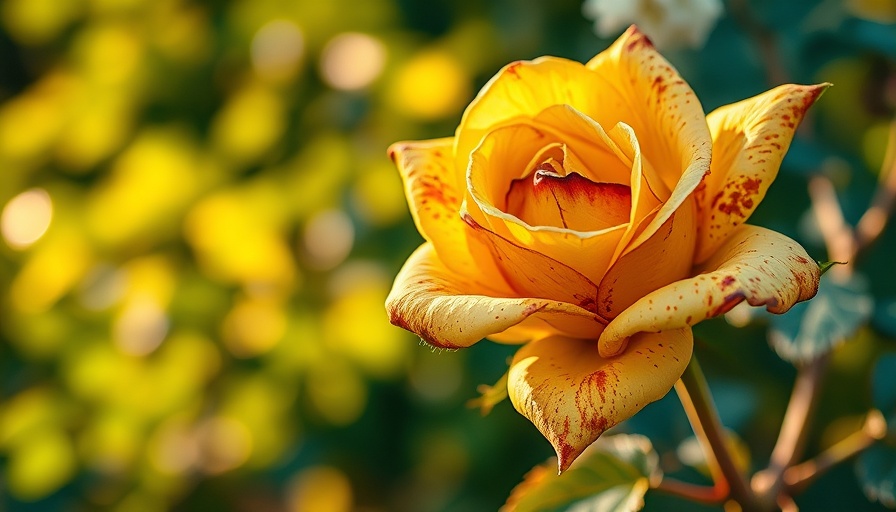
Why Yellow Leaves on Roses Matter
Your rose plants might not be able to vocalize their distress, but yellow leaves are their way of signaling that something is amiss. For garden enthusiasts and homeowners alike, recognizing and understanding the implications of yellowing foliage can save not just your roses, but your entire garden.
Common Causes of Yellowing Rose Leaves
1. Black Spot: This fungal disease, caused by Diplocarpon rosae, leads to yellowing leaves with dark spots, eventually causing the foliage to drop. It's a prevalent issue for rose growers.
2. Drought Conditions: Insufficient watering due to dry spells can result in yellowing leaves, with leaf tips browning. It’s crucial to assess your plant's water requirements, especially during high heat.
3. Iron Deficiency: If younger leaves turn yellow while the veins remain green, it could suggest an iron deficiency, commonly seen in alkaline soils. This is a critical nutritional issue that warrants immediate attention.
4. Nitrogen Deficiency: Leaf yellowing, especially in older leaves at the base of the plant, can indicate a shortage of nitrogen in the soil, essential for robust plant growth.
5. Viral Infections: Diseases like the Rose Mosaic Virus can cause distinctive yellow mottling of leaves, leading to diminished plant vitality.
6. Pest Infestations: Spider mites are notorious for draining the life out of plants, resulting in yellow leaves and webbing on the foliage.
7. Fertilizer Imbalance: Over-fertilization can lead to nutrient burn, manifesting as yellowing leaves. Accurate application of fertilizers is essential.
8. Excessive Shade: Roses thrive with adequate sunlight. Too much shade can impede growth, causing the leaves to turn yellow due to insufficient light.
9. Waterlogged Soil: Overwatering often leads to root rot, which can also cause yellow leaves, showing that balance in watering is vital.
10. Improper Soil Conditions: Sandy soil lacks moisture retention capabilities, stressing the plant and ultimately leading to yellowing leaves.
Tips to Remedy Yellowing Leaves
The good news is, identifying the problem can prompt remedial actions that may rejuvenate your roses. Regularly check for pests, ensure correct watering practices, and assess the soil quality for adequate nutrients. Incorporating compost can improve soil structure, and thus, nutrient availability.
Successful Garden Care Practices
To maintain the greenery and vibrancy of your rose plants, consider adopting holistic gardening practices. These practices include crop rotation, companion planting, and ensuring that you are using organic fertilizers. Not only do these methods promote healthier growth, but they also enhance sustainability and biodiversity in your garden.
Practical Steps for Troubleshooting Yellow Leaves
Actionable insights are the key to proactive gardening. Conduct soil tests to determine pH and nutrient levels. Observing your plants regularly for signs of distress or diseases can help shape your fly- and weed-management strategies.
The Emotional Satisfaction of Thriving Roses
Caring for your roses goes beyond aesthetics; it’s a therapeutic practice that connects you to nature. By addressing the symptoms of yellowing leaves promptly, you ensure the longevity of your plants and foster a more vibrant and enjoyable gardening experience.
In conclusion, taking the time to understand the signs and symptoms displayed by your roses is the first step in enhancing the health of your flower garden. With the right knowledge and care, those yellow leaves can transform back into healthy green foliage, bringing joy and brightness back into your backyard.
 Add Row
Add Row  Add
Add 




Write A Comment